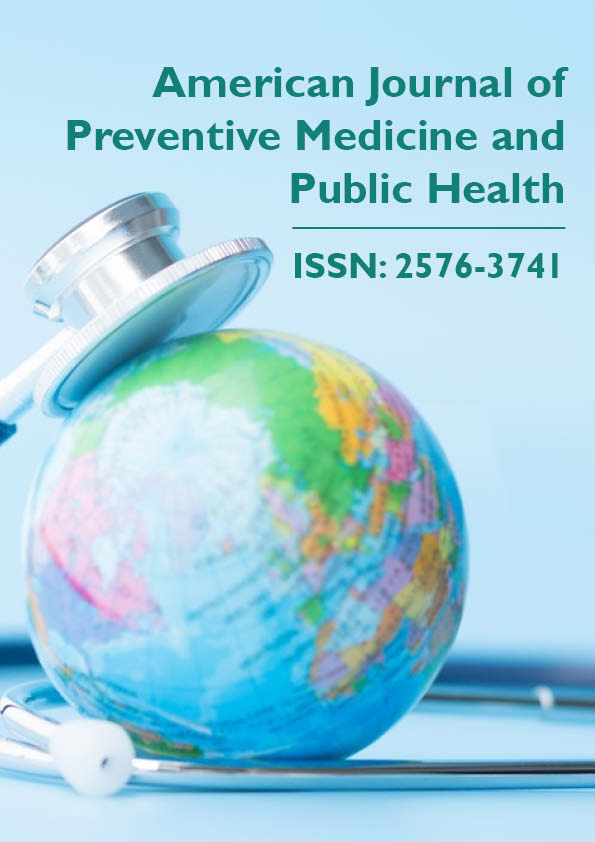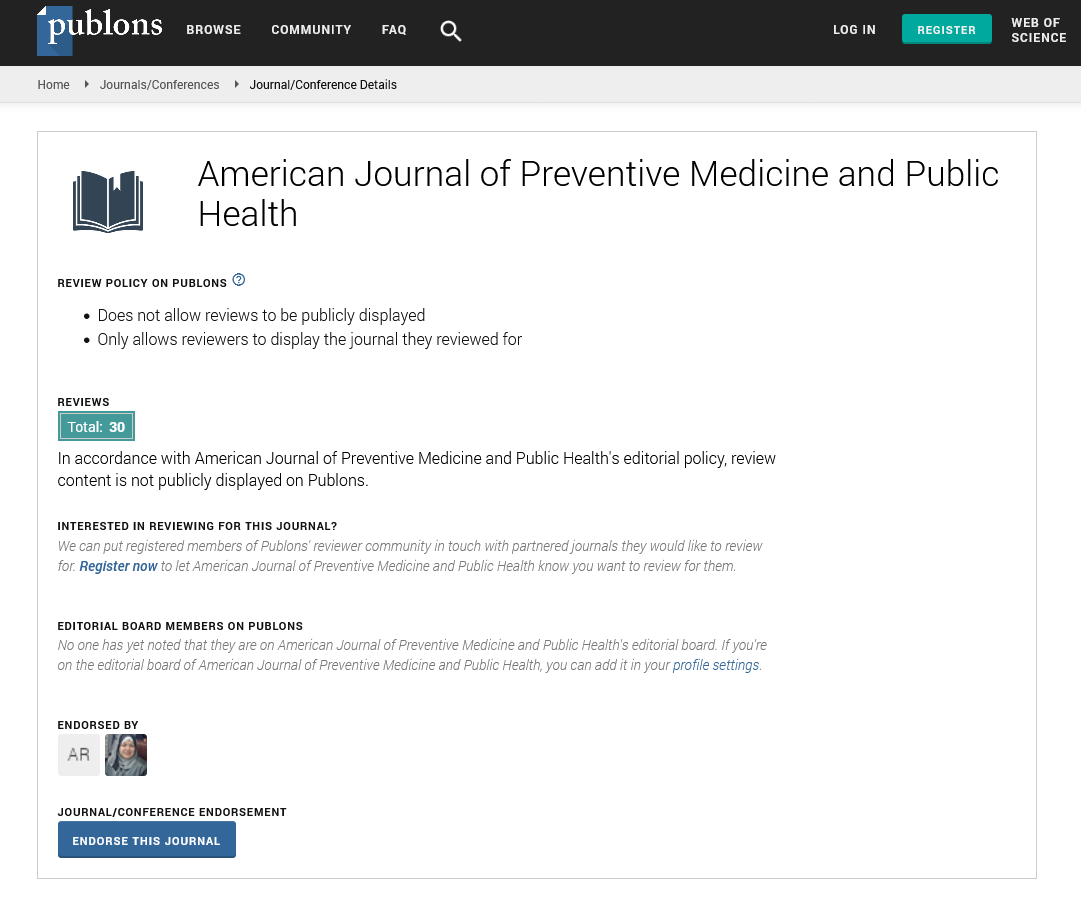Perspective Article - American Journal of Preventive Medicine and Public Health (2023)
Intermittent Preventive Treatment: A Strategic Approach to Combat Infectious Diseases
Azucena Bardají*Azucena BardajÃ, Department of Infecious and Tropical Diseases, London School of Hygiene and Tropical Medicine, London, UK, Email: bardajiazucena23@Gmail.com
Received: 04-Jul-2023, Manuscript No. AJPMPH-23-109638; Editor assigned: 06-Jul-2023, Pre QC No. AJPMPH-23-109638 (PQ); Reviewed: 20-Jul-2023, QC No. AJPMPH-23-109638; Revised: 27-Jul-2023, Manuscript No. AJPMPH-23-109638(R); Published: 03-Aug-2023
Description
Intermittent Preventive Treatment (IPT) is a prov-en public health strategy aimed at preventing and controlling infectious diseases, particularly malar-ia and certain other conditions prevalent in specif-ic populations. This approach involves the periodic administration of preventive medications to vul-nerable individuals, providing significant protec-tion against the targeted diseases. IPT is especially effective in regions with high disease burden and limited healthcare resources. This article explores the principles, effectiveness, challenges, and future potential of Intermittent Preventive Treatment in the fight against infectious diseases.
Principles of intermittent preventive treatment
Targeted administration: IPT is designed to tar-get specific populations at higher risk of infection, such as pregnant women, infants, and individuals living in malaria-endemic regions.
Prophylactic medication:Preventive medica-tions, typically antimalarial drugs, are given inter-mittently at fixed intervals to maintain therapeu-tic levels in the bloodstream, providing protection against the causative agents.
Integration with other interventions: IPT is of-ten combined with other preventive measures, such as insecticide-treated bed nets and vector control programs, to create a comprehensive approach to disease prevention.
Evidence-based guidelines: IPT implementation is guided by evidence-based recommendations from national and international health organiza-tions to ensure consistency and effectiveness..
Effectiveness of intermittent preventive treat-ment
Malaria prevention: IPT has been widely imple-mented as a critical tool in reducing malaria-related morbidity and mortality, particularly in high-bur-den areas of sub-Saharan Africa. Pregnant women and infants are the primary target populations for malaria IPT.
Reducing maternal and neonatal mortality: In malaria-endemic regions, IPT during pregnancy significantly lowers the risk of severe maternal anemia, low birth weight, and neonatal mortality, safeguarding the health of both the mother and the baby.
Preventing other infectious diseases: IPT has also shown promise in preventing other infectious diseases, such as schistosomiasis and HIV, although further research is ongoing to refine these inter-ventions.
Challenges in implementing intermittent pre-ventive treatment
Drug resistance: Frequent and widespread use of preventive medications can lead to the devel-opment of drug-resistant strains of pathogens. Monitoring and surveillance are essential to detect emerging resistance and adjust IPT strategies ac-cordingly.
Access to healthcare: Ensuring access to health-care facilities and delivering preventive medica-tions to remote or underserved populations can be challenging, affecting the reach and effectiveness of IPT programs.
Adherence to treatment: Compliance with IPT regimens is crucial for its success. Ensuring pa-tients take the full course of preventive medica-tion can be difficult, particularly in areas with low health literacy and limited follow-up opportunities.
Resource allocation: Funding and allocating re-sources for IPT programs may be limited in re-source-constrained settings, making sustainability a concern.
Future potential of intermittent preventive treatment
Expanding targeted diseases: As research and ev-idence grow, IPT could potentially be extended to prevent other infectious diseases beyond malaria and contribute to reducing their global burden.
Combination therapies: Combining multiple pre-ventive medications with different mechanisms of action could enhance the effectiveness of IPT and reduce the risk of drug resistance.
Integration with community health programs: Integrating IPT with existing community health programs and leveraging community health work-ers could improve access to preventive services in remote areas.
Leveraging technology: Mobile health (mHealth) applications and telemedicine platforms can aid in monitoring IPT adherence and improving health-care access and follow-up.
Intermittent Preventive Treatment is a valuable public health strategy that has demonstrated re-markable success in preventing and controlling in-fectious diseases, particularly malaria. By targeting vulnerable populations and providing prophylac-tic medications at regular intervals, IPT has saved countless lives and improved the health outcomes of communities in high-burden regions. However, its successful implementation requires address-ing challenges related to drug resistance, access to healthcare, and treatment adherence. As health-care systems evolve and technology advances, IPT holds immense promise for expanding its impact beyond malaria and contributing to the global ef-forts to combat infectious diseases. By embracing evidence-based guidelines, innovative approaches, and collaborative efforts, Intermittent Preventive Treatment remains a strategic and indispensable tool in the fight against infectious diseases, moving us closer to a healthier and more resilient world.







